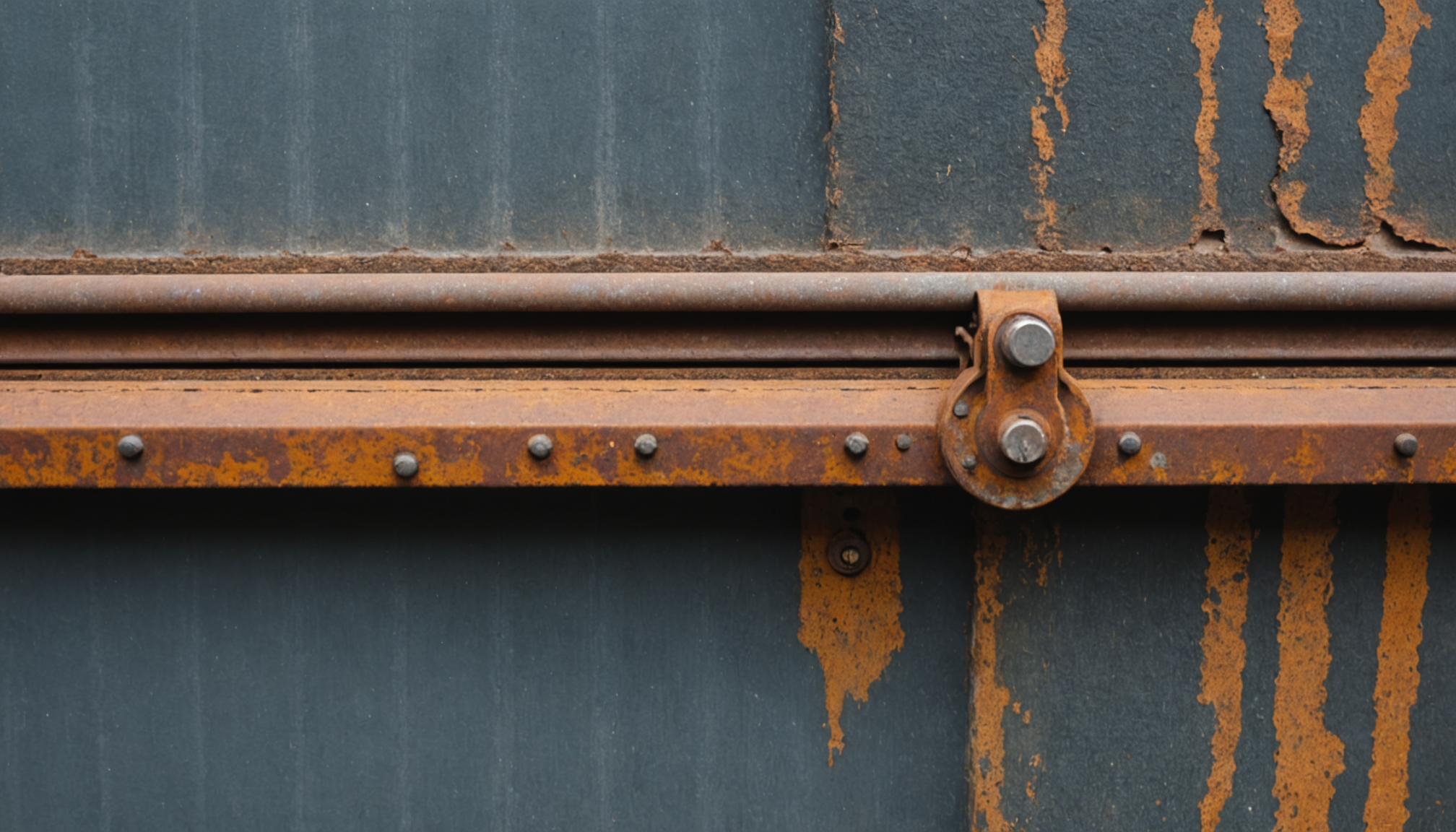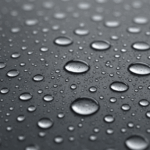Identifying the source of noise emanating from your garage door is the crucial first step in addressing any issues. Often, a noisy garage door can be an indication of wear and tear that, if left unchecked, might lead to more significant problems. Therefore, understanding where and why the noise occurs will enable you to take targeted action, ensuring the longevity and smooth operation of your garage door.
To efficiently pinpoint the noise, start by operating the garage door and paying close attention to the specific sounds it makes. Focus on the type and location of the noise. Ask yourself: is the noise a rattle, screech, grinding, or banging? Each type of sound can provide clues about its source. A rattle often indicates loose hardware, whereas screeching could suggest insufficient lubrication.
As you listen, also visually inspect the garage door system. Look at the door panels, tracks, rollers, and springs. These components should be examined for signs of wear, rust, or damage. Note any irregular movements or visible deterioration, as these can create or contribute to operational noise. Here are some common culprits and their characteristics:
- Track Misalignment: If the metal tracks are not aligned correctly, you might hear squeaking or scraping noises. Look for gaps between the rollers and tracks.
- Worn-out Rollers: Nylon rollers can become cracked, and metal rollers may develop rust. Both conditions might cause a rubbing or grinding noise.
- Loose Nuts and Bolts: A clanking sound may indicate loose hardware. This issue is common in areas that experience frequent vibrations.
- Spring Issues: Torsion and extension springs can stretch or weaken over time. A loud bang might indicate a spring that is nearing its end.
- Opener Problems: Listen for unusual sounds emanating from the opener itself, such as humming or buzzing, which might hint at an internal issue.
Once you think you’ve identified the type and source of the noise, note these down as they will guide your next steps in troubleshooting. By isolating the noise, you can proceed with appropriate solutions such as tightening loose parts, lubricating components, or replacing worn sections. Here is a comparison table to quickly associate common sounds with potential problems:
| Sound | Potential Source |
| Rattle | Loose bolts or brackets |
| Screech | Dry tracks or rollers |
| Grinding | Worn rollers |
| Banging | Spring failure |
| Humming/Buzzing | Opener motor issue |
By focusing both audibly and visually, you empower yourself with the knowledge needed to effectively troubleshoot a noisy garage door. Remember, the ultimate goal is not just quieting noises, but ensuring the safety and functionality of this essential home component.
Tightening loose hardware
Tackling loose hardware is a straightforward yet essential step in silencing a noisy garage door. The vibrations from frequent use can lead to various components loosening over time. This can result in rattling and other disruptive noises. Here’s how to methodically tighten and inspect these components:
- Gather Necessary Tools: Before you start, ensure you have the appropriate tools. A basic socket set or a wrench set is typically needed to tighten most garage door hardware. Having a stepladder handy can also help you reach higher components safely.
- Disconnect the Garage Door Opener: For safety reasons, always disconnect the power to the garage door opener before starting any maintenance. This prevents the door from accidentally moving while you’re working on it.
- Inspect the Brackets: Begin with the brackets that hold the door tracks securely to the walls and ceiling. Use your wrench or socket set to tighten any loose bolts or screws on the brackets. Ensure each one is securely fastened but be cautious not to overtighten, as this could strip the threads or warp the brackets.
- Check the Hinges: The hinges allow the door panels to operate smoothly, so they frequently contribute to noise if they become loose. Manually inspect each hinge along the door. Tighten any loose screws or bolts and replace any hinges that appear cracked or excessively worn.
- Evaluate the Roller Assembly: The rollers are key for smooth movement along the tracks. Each roller is mounted on a shaft secured by brackets. Tighten any loose nuts or bolts holding the roller brackets. If rollers seem worn, consider replacing them even if they are not loose, as this will prevent future noise and functional problems.
- Secure the Opener Unit: If your garage door opener is attached to the ceiling, check its mounting bolts. Loose mounting bolts can create vibrations that result in noise. Tighten these securely, ensuring the opener unit is stable.
- Inspect the Chain or Belt Drive Components: If your system uses a chain or belt drive, ensure all components are tight. Loose chains can cause slapping noises during operation. Adjust the tension according to the manufacturer’s guidelines, making sure it’s neither too tight nor too slack.
- Recheck Alignment: After securing all loose hardware, it’s beneficial to recheck the alignment of the door and tracks. Misalignment can still cause noises despite tightened components. Adjust as necessary for flush operation.
- Test the Garage Door: Once all loose hardware is tightened and adjusted, reconnect the garage door opener and test the door. Pay attention to any lingering noises that might indicate other unresolved issues.
Taking the time to thoroughly secure and inspect these components not only addresses immediate noise concerns but also supports the overall structural integrity and longevity of your garage door system.
Lubricating moving parts
To effectively reduce noise and ensure smooth operation, applying lubrication to moving parts is essential. This step not only quiets the garage door but also contributes significantly to extending the lifespan of its components. Proper lubrication minimizes friction between metal surfaces, which can prevent premature wear and damage.
Start by identifying the key areas that will benefit from lubrication. These include the hinges, rollers, springs, and tracks. Use a high-quality, silicone-based spray or a garage door lubricant specifically designed for these components. Avoid using WD-40 or oil-based products as they can attract dust and grime over time, potentially worsening the problem.
Focus on the rollers first. Whether they are steel or nylon, a quick spray of lubricant will help them glide smoothly along the tracks. Ensure to apply the lubricant to the axles of the rollers as well, as this area often experiences significant friction. If your garage door has steel rollers, pay special attention to these because they can generate more noise compared to their nylon counterparts.
Next, turn your attention to the hinges that connect the panels of the garage door. These hinges pivot every time the door opens and closes, making them prone to wear. Apply a small amount of lubricant to each hinge, ensuring it seeps into the pivot point to facilitate smooth movement. Doing so reduces metal-on-metal contact, which is a common source of noise.
The springs, whether torsion or extension, play a vital role in the operation of the garage door. These heavy-duty components bear the brunt of the lifting and lowering process. Carefully spray the springs with lubricant to prevent them from sticking and make sure to cover their full length. This helps not only in reducing noise but also in maintaining optimal tension and flexibility.
Lastly, apply a thin coat of lubricant to the inside of the tracks. While the rollers travel along these paths, the friction can cause squeaking or grinding noises, especially in unclean or unlubricated tracks. After applying the lubricant, open and close the door several times to evenly distribute it along the length of the tracks. This ensures that each component functions smoothly, contributing to a quieter operation.
Regular lubrication should be a part of your seasonal garage door maintenance routine. By keeping these moving parts well-lubricated, you reduce strain on the opener and other system components, significantly extending their operational life. This simple yet crucial maintenance task not only diminishes existing noise but also prevents future mechanical issues, ensuring your garage door operates efficiently for years to come.
Inspecting and replacing worn components
While it may be tempting to overlook worn components as a source of noise, regularly inspecting and replacing these elements is vital to maintaining a quiet and efficient garage door. Over time, parts naturally degrade due to constant use, environmental conditions, and lack of maintenance, making it crucial to identify and address these issues proactively.
Begin your inspection with the garage door’s rollers. These are integral to the door’s smooth movement and can significantly contribute to noise if they’re in poor condition. Look for wear such as flat spots, cracks, or excessive wobbling in the rollers. Metal rollers often get rusty, causing a grinding or squealing sound, while nylon rollers may become cracked or lose their roundness. Worn rollers should be replaced promptly to prevent further damage to the tracks and ensure quieter operation.
Next, assess the garage door’s springs—either torsion or extension. These play a pivotal role in counterbalancing the door’s weight, allowing for smooth opening and closing. Springs that are excessively stretched, have gaps, or show rust and corrosion must be replaced. Neglecting damaged springs not only increases noise but can also cause significant operational failure or even pose safety risks, as a broken spring might lead to the door suddenly dropping.
The hinges, which connect the sections of the garage door, should also be checked for wear. Inspect each hinge for signs of cracking or metal fatigue. Loose or damaged hinges can affect the alignment and movement of the door sections, creating noise and potential jamming issues. Replacing hinges with durable, high-quality ones ensures the door panels remain aligned and move quietly.
Don’t forget to evaluate the integrity of the tracks themselves. Tracks can become bent or misaligned over time, causing the rollers to catch or bind, leading to noisy operation. Inspect the tracks for dents, bends, or visible misalignment. Use a mallet to gently tap any bent sections back into shape, or consider replacing severely damaged tracks to ensure smooth and silent door movement.
Finally, check the cables that assist in lifting the door. Frayed or damaged cables can snap, causing a loud noise and creating a serious safety hazard. If you notice wear in the cables, it’s crucial to have them replaced by a professional, as replacing them requires specialized tools and expertise.
Replacing worn components is not just about silencing an irritating noise; it’s a critical part of maintaining the garage door’s safety and efficiency. By regularly inspecting and addressing worn parts, you safeguard against unexpected breakdowns and extend the lifespan of your garage door system. Remember, a proactive approach to maintenance today can prevent costly repairs and ensure a quieter, more reliable garage door tomorrow.
Balancing the garage door
Balancing your garage door is a vital step in ensuring its smooth and quiet operation. An imbalanced garage door can be a significant source of noise, as one side may carry more weight, causing uneven movement and additional strain on the motor and other components. Over time, this can lead to further wear and tear, potentially shortening the lifespan of your garage door system.
To begin, you need to disconnect the garage door opener. This allows you to test the balance manually without interference. Once the opener is disconnected, lift the garage door manually to the halfway point and then let go. A balanced door should remain in place or move very slightly. If it slams shut or continues to rise, it indicates an imbalance that needs correction.
The imbalance is often due to issues with the tension in the springs. Garage doors use either torsion springs or extension springs to counterbalance the weight. Adjusting these springs can be dangerous and is usually best left to a professional, as improper handling can lead to injury or further damage to the garage door system.
For those with experience and proper tools, adjusting the springs typically involves tightening or loosening the spring tension. Torsion springs, located above the door when closed, require a winding bar to adjust. To increase tension, which is necessary if the door falls rapidly, the spring should be tightened. Conversely, if the door rises on its own, decreasing the tension will help.
Extension springs, found along the sides of the door, are adjusted by moving the hook found at the end of the spring to a different hole in the track. As with torsion springs, care must be taken to ensure safety during this process to avoid injury.
After adjusting the springs, test the door again by manually lifting it to the halfway point. It should stay balanced when properly tensioned. Regularly checking the balance of your garage door and adjusting as needed is crucial for minimizing noise and preventing excessive wear on other components, contributing to long-term functionality and safety.
Balancing your garage door not only addresses noise concerns but also ensures that it operates with minimal stress on the components. This reduces the need for frequent repairs and extends the life of your door, allowing it to function smoothly and quietly.
In conclusion, addressing and fixing a noisy garage door involves a combination of identifying and understanding the noise, tightening loose parts, lubricating essential components, and replacing any worn parts while ensuring the door is properly balanced. Through regular maintenance and timely interventions, you can keep your garage door running efficiently and quietly, safeguarding its longevity and functionality. A quiet, well-balanced garage door not only enhances the peace of your home but also contributes to safety and cost-effective operation over time.


